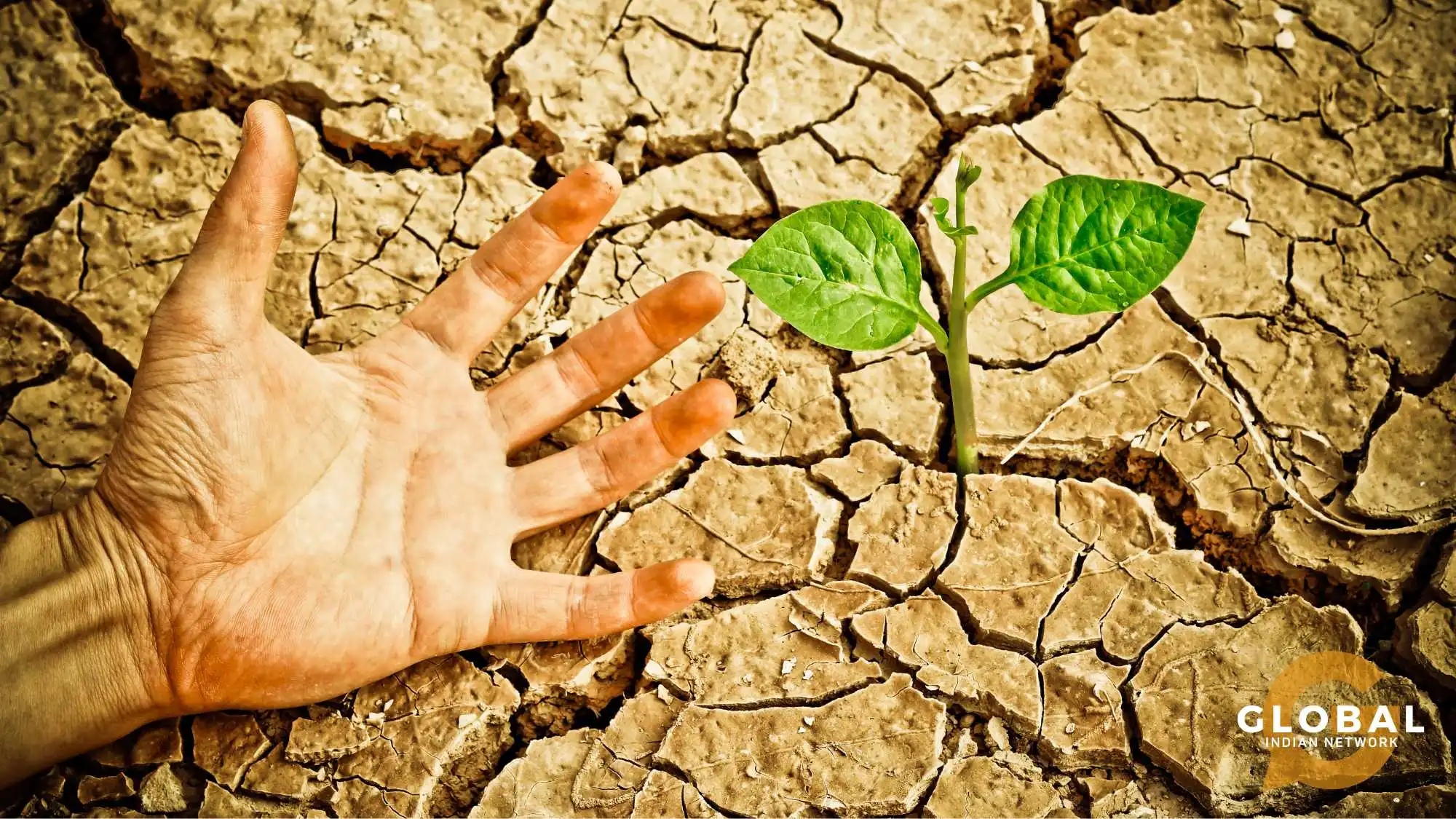Environmental disasters have been a persistent challenge throughout human history, often with devastating consequences for both the natural world and human societies. These disasters, ranging from earthquakes and hurricanes to oil spills and nuclear accidents, highlight the delicate balance of our ecosystem and the significant impact human activities can have on the environment. This article provides a list of environmental disasters that occurred worldwide, their effects, and potential solutions to mitigate and prevent such events in the future.
Table of Contents
What Are Disasters?
Disasters are sudden, catastrophic events that cause significant damage, disruption, and loss. They can be natural or human-made and often result in a profound impact on communities, economies, and ecosystems.
Types of Disasters
Disasters are generally categorized into two main types: natural disasters and human-made (or anthropogenic) disasters.
Natural Disasters
These are events caused by natural processes of the Earth. Examples include:
Earthquakes: Sudden shaking of the ground caused by the movement of tectonic plates.
Volcanic Eruptions: Explosive eruptions of molten rock, ash, and gases from volcanoes.
Hurricanes: Powerful tropical storms with high winds and heavy rain.
Floods: Overflowing of water onto land that is normally dry.
Tsunamis: Large sea waves caused by underwater earthquakes or volcanic eruptions.
Wildfires: Uncontrolled fires in forests, grasslands, or other vegetation.
Human-Made Disasters
Human-caused environmental disasters are events caused by human activities, often resulting from negligence, error, or deliberate actions. Examples include:
Industrial Accidents: Explosions, fires, or chemical spills in factories and plants.
Oil Spills: Release of petroleum into the environment, particularly oceans.
Nuclear Accidents: Releases of radioactive materials, such as the Chernobyl disaster.
Deforestation: Large-scale clearing of forests, leading to habitat destruction and loss of biodiversity.
Pollution: Contamination of air, water, and soil with harmful substances.
YOU MIGHT BE INTERESTED IN: World Environment Day Special: A Voice for Change with Ridhima Pandey
What Are the Types of Environmental Disasters?
Environmental disasters specifically refer to those incidents that cause significant damage to the natural environment. They can be either natural or human-made, but they share the common trait of causing ecological harm.
Chemical Spills: The release of hazardous chemicals into the environment can lead to soil and water contamination, harming plant and animal life.
Oil Spills: Oil spills in oceans and seas cause severe damage to marine ecosystems, affecting wildlife, habitats, and human livelihoods.
Nuclear Accidents: The release of radioactive materials into the environment, leading to long-term contamination and health risks.
Deforestation: The large-scale removal of forests for agriculture, urban development, or logging, resulting in habitat loss and biodiversity decline.
Climate Change: Long-term changes in temperature and weather patterns, largely driven by human activities such as burning fossil fuels and deforestation.
Biodiversity Loss: The extinction of species and destruction of ecosystems, often due to human activities such as habitat destruction, pollution, and overexploitation.
What Are the Effects of Environmental Disasters?
Environmental disasters can have far-reaching and long-lasting effects on both natural ecosystems and human communities. These impacts can be broadly categorized into ecological, economic, and social effects.
Ecological Effects
Habitat Destruction: Environmental disasters often lead to the destruction of natural habitats, resulting in loss of biodiversity and disruption of ecosystems.
Pollution: Disasters such as oil spills and chemical leaks can lead to widespread pollution of air, water, and soil, affecting plant and animal life.
Climate Change: Events like wildfires and deforestation contribute to the release of greenhouse gases, exacerbating climate change.
Soil Degradation: Floods and chemical spills can lead to soil erosion and degradation, reducing its fertility and productivity.
Economic Effects
Damage to Infrastructure: Disasters can cause significant damage to buildings, roads, and other infrastructure, leading to costly repairs and economic losses.
Loss of Livelihoods: Many communities depend on natural resources for their livelihoods. Environmental disasters can disrupt these resources, leading to loss of income and employment.
Healthcare Costs: The health impacts of disasters, such as exposure to pollutants and radiation, can lead to increased healthcare costs and long-term health issues.
Social Effects
Displacement: Environmental disasters often force people to leave their homes and communities, leading to displacement and social disruption.
Health Impacts: Exposure to hazardous substances and polluted environments can lead to acute and chronic health problems.
Psychological Effects: The trauma and stress associated with experiencing a disaster can have long-term psychological effects on individuals and communities.
Environmental Disasters in the Ocean
The oceans, covering more than 70% of the Earth’s surface, are particularly vulnerable to environmental disasters. These disasters can have devastating effects on marine ecosystems and the human communities that rely on them.
Types of Oceanic Environmental Disasters
Oil Spills: One of the most well-known types of oceanic disasters. Oil spills, such as the Deepwater Horizon spill in the Gulf of Mexico, can devastate marine life, contaminate coastlines, and disrupt fishing and tourism industries.
Plastic Pollution: The accumulation of plastic debris in the ocean, forming large garbage patches, harms marine animals through ingestion and entanglement and introduces toxic substances into the food chain.
Coral Bleaching: Rising sea temperatures and pollution cause coral reefs to lose their colour and vitality, leading to the decline of these crucial marine ecosystems.
Overfishing: The depletion of fish stocks due to excessive fishing disrupts marine food webs and threatens the livelihoods of communities that depend on fishing.
Ocean Acidification: Increased carbon dioxide levels in the atmosphere lead to higher levels of carbonic acid in the ocean, affecting marine life, particularly organisms with calcium carbonate shells and skeletons.
What are the Impacts of Environmental Disasters?
The environmental impacts of disasters can be profound and long-lasting, affecting air, water, soil, and biodiversity. These impacts often exacerbate existing environmental problems and create new challenges for ecosystems and human populations.
Air Pollution
Disasters such as wildfires, industrial accidents, and volcanic eruptions can release large quantities of pollutants into the atmosphere. These pollutants, including particulate matter, sulfur dioxide, and volatile organic compounds, can degrade air quality and contribute to respiratory problems, cardiovascular diseases, and climate change.
Water Contamination
Water resources can be severely affected by environmental disasters. Chemical spills, oil spills, and runoff from polluted areas can contaminate rivers, lakes, and groundwater. This contamination poses risks to human health, aquatic life, and the availability of clean drinking water.
Soil Degradation
Soil health is crucial for agriculture and ecosystem stability. Environmental disasters such as floods, chemical spills, and deforestation can lead to soil erosion, loss of fertility, and contamination. This degradation affects crop yields, biodiversity, and the resilience of ecosystems.
Loss of Biodiversity
Biodiversity loss is a significant consequence of environmental disasters. Habitat destruction, pollution, and climate change are driven by these disasters and can lead to the extinction of species, the disruption of ecosystems, and the loss of ecosystem services such as pollination, water purification, and carbon sequestration.
Long-Term Environmental Damage
The long-term environmental damage caused by disasters can take decades or even centuries to repair. Contaminated sites, degraded ecosystems, and lost species represent a persistent challenge for environmental restoration and conservation efforts.
ALSO READ: Simple Pledges on World Environment Day 2024 to Make a Big Difference
List of Environmental Disasters in History
Human activities have caused several catastrophic environmental disasters throughout history, resulting in significant loss of life and long-term environmental damage. Here are five such disasters:
Bhopal Gas Tragedy (1984)
Location: Bhopal, India
Cause: A leak of methyl isocyanate gas from a pesticide plant owned by Union Carbide India Limited.
Lives Lost: Estimated 3,800 immediate deaths, with over 16,000 subsequent deaths due to related health issues.
The Bhopal Gas Tragedy is considered one of the world’s worst industrial disasters. On the night of December 2, 1984, a toxic cloud of methyl isocyanate gas escaped from the Union Carbide plant, enveloping the city of Bhopal. Thousands of people died immediately, and many more suffered from severe health issues, including respiratory problems, blindness, and congenital disabilities. The disaster also left a lasting legacy of environmental contamination in the area.
Chernobyl Nuclear Disaster (1986)
Location: Chernobyl, Ukraine (then part of the Soviet Union)
Cause: A reactor explosion and fire at the Chernobyl Nuclear Power Plant.
Lives Lost: Immediate deaths numbered 31, with long-term deaths from radiation exposure estimated in the thousands.
On April 26, 1986, a reactor at the Chernobyl Nuclear Power Plant exploded, releasing large amounts of radioactive material into the atmosphere. The explosion and subsequent fire sent a radioactive plume over much of Europe. The immediate area around Chernobyl became uninhabitable, and the long-term health effects, including cancer and congenital disabilities, affected thousands of people. The disaster prompted significant changes in nuclear safety standards worldwide.
Deepwater Horizon Oil Spill (2010)
Location: Gulf of Mexico
Cause: A blowout of the Deepwater Horizon offshore drilling rig operated by BP.
Lives Lost: 11 workers died in the explosion.
On April 20, 2010, the Deepwater Horizon drilling rig suffered a blowout, leading to an explosion and a massive oil spill. Over 4 million barrels of oil were released into the Gulf of Mexico, causing extensive damage to marine and coastal ecosystems. The spill had devastating effects on local wildlife, fisheries, and tourism industries. The cleanup efforts lasted for years, and the environmental impact is still felt today.
Japan’s ‘Four Big Pollution Diseases’
Japan’s “Four Big Pollution Diseases” refer to a series of environmental and public health crises that occurred in Japan between the 1950s and 1970s due to industrial pollution. These four cases had profound impacts on environmental policy and industrial practices in Japan.
Minamata Disease
Location: Minamata, Kumamoto Prefecture
Cause: Mercury poisoning from industrial wastewater discharged by the Chisso Corporation.
Lives Lost: Over 1,784 deaths officially certified, with many more affected.
Minamata Disease was first identified in 1956 when residents of Minamata city started showing severe neurological symptoms. The cause was traced to the consumption of fish and shellfish contaminated with methylmercury, which had been discharged into Minamata Bay by the Chisso Corporation. The disaster led to widespread health problems, including congenital disorders, and had a lasting impact on the local community.
Niigata Minamata Disease
Location: Niigata Prefecture
Cause: Mercury poisoning from wastewater discharged by the Showa Denko plant.
Lives Lost: Several deaths, with many affected by chronic illness.
Similar to the Minamata Disease, this outbreak was caused by mercury pollution from an industrial plant. Identified in 1965, it led to severe neurological damage among the affected population, primarily due to contaminated seafood from the Agano River.
Yokkaichi Asthma
Location: Yokkaichi, Mie Prefecture
Cause: Air pollution from petrochemical plants.
Lives Lost: Numerous deaths over the years due to respiratory diseases.
Yokkaichi Asthma refers to respiratory illnesses caused by sulfur dioxide emissions from petrochemical plants in Yokkaichi city. Starting in the 1960s, residents suffered from chronic bronchitis, asthma, and other respiratory conditions due to severe air pollution.
Itai-Itai Disease
Location: Toyama Prefecture
Cause: Cadmium poisoning from mining operations.
Lives Lost: Several deaths, with many suffering from chronic pain and bone fractures.
Itai-Itai Disease was first identified in the 1940s and was caused by cadmium-contaminated water from mining operations. The cadmium pollution affected rice fields, leading to the ingestion of the toxic metal by residents. The disease was characterized by severe pain, brittle bones, and kidney failure.
Niger Delta Oil Pollution
Location: Niger Delta, Nigeria
Cause: Oil spills and pollution from extensive oil extraction activities.
Lives Lost: Numerous indirect deaths due to environmental degradation and health issues.
The Niger Delta region in Nigeria has experienced severe environmental degradation due to extensive oil extraction and spills. Oil companies, primarily multinational corporations, have been extracting oil in the region for decades. Frequent oil spills, gas flaring, and operational discharges have led to widespread pollution of water, soil, and air.
This pollution has devastated local ecosystems, leading to loss of biodiversity, destruction of mangroves, and contamination of water sources. The local communities, heavily reliant on fishing and agriculture, have suffered immensely, facing health problems, loss of livelihoods, and displacement. The long-term environmental and health impacts continue to affect the Niger Delta’s inhabitants.
Ecuador’s Amazon Degradation
Location: Amazon rainforest, Ecuador
Cause: Oil extraction activities by Texaco (now Chevron).
Lives Lost: Numerous indirect deaths due to environmental and health impacts.
From the 1960s to the 1990s, Texaco (later acquired by Chevron) operated in Ecuador’s Amazon rainforest, extracting vast amounts of oil. During this period, the company discharged billions of gallons of toxic wastewater into rivers and unlined pits, leading to severe environmental contamination.
The pollution has caused widespread health issues among indigenous communities, including cancer, skin diseases, and congenital disabilities. It has also led to the loss of biodiversity and the destruction of large tracts of rainforest. The affected communities have been fighting for compensation and remediation for decades, highlighting the severe environmental and human rights violations.
Peru’s Amazon Degradation
Location: Amazon rainforest, Peru
Cause: Oil extraction and mining activities.
Lives Lost: Numerous indirect deaths due to environmental and health impacts.
In Peru, the Amazon rainforest has suffered from significant environmental degradation due to oil extraction and mining activities. Oil spills, deforestation, and pollution from mining operations have led to the contamination of rivers and soil, affecting local wildlife and indigenous communities.
The environmental damage has resulted in loss of biodiversity, disruption of traditional livelihoods, and severe health problems for the indigenous populations, including respiratory and gastrointestinal diseases. Efforts to address these issues have been ongoing, but the region continues to face significant challenges in balancing economic development and environmental conservation.
Italy’s Seveso Dioxin Cloud
Location: Seveso, Lombardy, Italy
Cause: Chemical explosion at a manufacturing plant.
Lives Lost: No immediate fatalities, but long-term health impacts include cancer and congenital disabilities.
On July 10, 1976, a chemical plant operated by ICMESA released a toxic cloud of dioxin (TCDD) over the town of Seveso following an explosion. The accident exposed thousands of residents to harmful levels of dioxin, a highly toxic compound linked to cancer, reproductive and developmental problems, and immune system damage.
The immediate aftermath saw the evacuation of affected areas and the slaughter of contaminated livestock. Long-term health studies have shown increased rates of cancer and other health issues among the exposed population. The disaster led to the establishment of the Seveso Directive in the European Union, aimed at preventing and controlling chemical accidents.
France’s Amoco Cadiz Tanker Spill
Location: Coast of Brittany, France
Cause: The sinking of the Amoco Cadiz oil tanker.
Lives Lost: No human fatalities, but extensive wildlife deaths.
On March 16, 1978, the oil tanker Amoco Cadiz ran aground off the coast of Brittany, France, releasing 220,000 tons of crude oil into the sea. The spill caused one of the largest oil pollution disasters in history, severely affecting the marine and coastal environments.
The spill contaminated approximately 360 kilometres of coastline, killing marine life, including fish, birds, and invertebrates, and destroying habitats such as salt marshes and rocky shores. The environmental impact was devastating, leading to long-term ecological damage and significant economic losses for the local fishing and tourism industries. The disaster underscored the need for better maritime safety and oil spill response measures.
Exxon Valdez Oil Spill (1989)
Location: Prince William Sound, Alaska, USA
Cause: The Exxon Valdez oil tanker ran aground, spilling crude oil.
Lives Lost: While no immediate human fatalities occurred, the spill caused extensive wildlife deaths.
On March 24, 1989, the Exxon Valdez oil tanker struck a reef in Prince William Sound, Alaska, spilling approximately 11 million gallons of crude oil. The spill affected over 1,300 miles of coastline and caused massive damage to the marine environment. Thousands of seabirds, otters, seals, and fish were killed, and the local fishing industry was devastated. The disaster led to significant changes in oil spill prevention and response policies in the United States.
The 1983 Melbourne Dust Storm
Location: Melbourne, Victoria, Australia
Cause: Severe drought and strong winds.
Lives Lost: No direct fatalities, but significant health impacts and property damage.
On February 8, 1983, Melbourne experienced one of its most severe environmental events when a massive dust storm swept through the city. The storm was caused by a combination of severe drought conditions and strong winds, which lifted topsoil from the parched farmlands of Victoria and carried it across the region. The dust storm darkened the skies over Melbourne, reducing visibility to just a few meters and creating an eerie, apocalyptic scene.
While there were no direct fatalities, the storm had significant health impacts, particularly for those with respiratory conditions, and caused extensive property damage. The event highlighted the vulnerability of urban areas to natural phenomena exacerbated by climatic conditions and underscored the importance of sustainable land management practices to prevent soil erosion and protect against similar occurrences in the future.
The 2000 Baia Mare Cyanide Spill
Location: Baia Mare, Romania
Cause: A breach in a dam containing cyanide-contaminated water from the gold mining operations of the Aurul company.
Lives Lost: No immediate human fatalities, but significant environmental and economic damage.
On January 30, 2000, a major environmental disaster struck Baia Mare in northern Romania when a dam containing cyanide-laden wastewater from the Aurul gold mine burst. The breach released approximately 100,000 cubic meters of cyanide-contaminated water into the Someș River, which subsequently flowed into the Tisza and Danube Rivers, spreading the contamination across Romania, Hungary, and Serbia.
The spill caused widespread devastation to aquatic life, killing an estimated 80% of the fish population in the affected rivers and severely disrupting local ecosystems. While there were no immediate human fatalities, the spill had profound environmental and economic impacts, affecting the livelihoods of communities dependent on fishing and agriculture. The disaster highlighted the significant risks associated with mining operations and the need for stringent environmental safeguards and better emergency response mechanisms to prevent and mitigate similar incidents in the future.
ALSO READ: 10 Shocking Human-Caused Environmental Disasters You Need to Know About
Solutions to Environmental Disasters
Preventing and mitigating the impacts of environmental disasters requires a multifaceted approach that includes policy measures, technological innovations, and community engagement. Here are some key strategies to address and prevent environmental disasters:
Strengthening Regulations and Enforcement: Governments play a crucial role in preventing environmental disasters by enacting and enforcing regulations that limit harmful activities. Strengthening environmental regulations, such as those governing industrial emissions, deforestation, and waste management, can reduce the risk of disasters. Additionally, ensuring strict enforcement and accountability for violations is essential to deter negligent and harmful practices.
Promoting Sustainable Practices: Encouraging sustainable practices in industries such as agriculture, forestry, and fishing can help reduce the risk of environmental disasters. Sustainable practices include reducing pesticide and fertilizer use, adopting conservation agriculture techniques, implementing responsible fishing practices, and promoting reforestation and afforestation projects.
Investing in Clean Energy: Transitioning to clean and renewable energy sources such as solar, wind, and hydroelectric power can reduce greenhouse gas emissions and decrease the reliance on fossil fuels. This transition can mitigate climate change, one of the driving factors behind many environmental disasters.
Enhancing Disaster Preparedness and Response: Improving disaster preparedness and response capabilities is critical to minimizing the impacts of environmental disasters. This includes developing early warning systems, conducting regular disaster drills, and creating contingency plans for various types of disasters. Equipping communities with the knowledge and resources to respond effectively can save lives and reduce environmental damage.
Restoring Ecosystems: Restoring damaged ecosystems is essential for recovering from environmental disasters and building resilience against future events. Restoration efforts can include replanting forests, rehabilitating wetlands, and restoring coral reefs. These efforts help reestablish ecosystem functions and services, such as water purification, carbon sequestration, and habitat provision.
Reducing Pollution: Efforts to reduce pollution can have a significant impact on preventing environmental disasters. This includes measures to reduce plastic waste, control industrial emissions, and limit the use of harmful chemicals. Implementing effective waste management systems and promoting recycling and circular economy practices can also help reduce the environmental footprint.
Raising Awareness and Education: Educating the public about the causes and consequences of environmental disasters is crucial for fostering a culture of environmental stewardship. Raising awareness through campaigns, educational programs, and community initiatives can encourage individuals and organizations to adopt more sustainable behaviours and support environmental conservation efforts.
LISTEN TO THIS PODCAST: Official Unofficial COP26: Addressing Environmental Challenges and Climate Change
Conclusion
Understanding and addressing the root causes and effects of environmental disasters is crucial for safeguarding our planet and future generations. By examining a comprehensive list of environmental disasters, we can learn valuable lessons and implement effective prevention and mitigation strategies. Strengthening regulations, promoting sustainable practices, and raising awareness are essential to reducing the frequency and severity of such catastrophic events. Proactive measures and global cooperation are crucial to building a resilient and sustainable world.
FAQs
What’s the most famous disaster?
The most famous disaster was the 1986 Chernobyl nuclear accident in Ukraine, which resulted in widespread radioactive contamination and long-term health and environmental impacts. It remains a pivotal event in the history of nuclear energy and disaster response.
What is the biggest water disaster?
The biggest water disaster was the 2004 Indian Ocean tsunami, triggered by a massive undersea earthquake, which resulted in over 230,000 deaths across 14 countries and caused widespread devastation to coastal communities and ecosystems.
What are the environmental pollutants in the water?
Environmental pollutants in water include chemicals such as pesticides, heavy metals, industrial waste, and biological contaminants like bacteria and viruses, which can harm aquatic ecosystems and human health. These pollutants often originate from agricultural runoff, industrial discharges, and untreated sewage.










[…] work conferences. Its expertise spans business, computing, ICT, education, psychology, tourism, environmental sciences, health sciences, and research, reflecting its commitment to academic development and […]
[…] not only numerous marine life forms but also have an indispensable part to play in regulating environmental […]